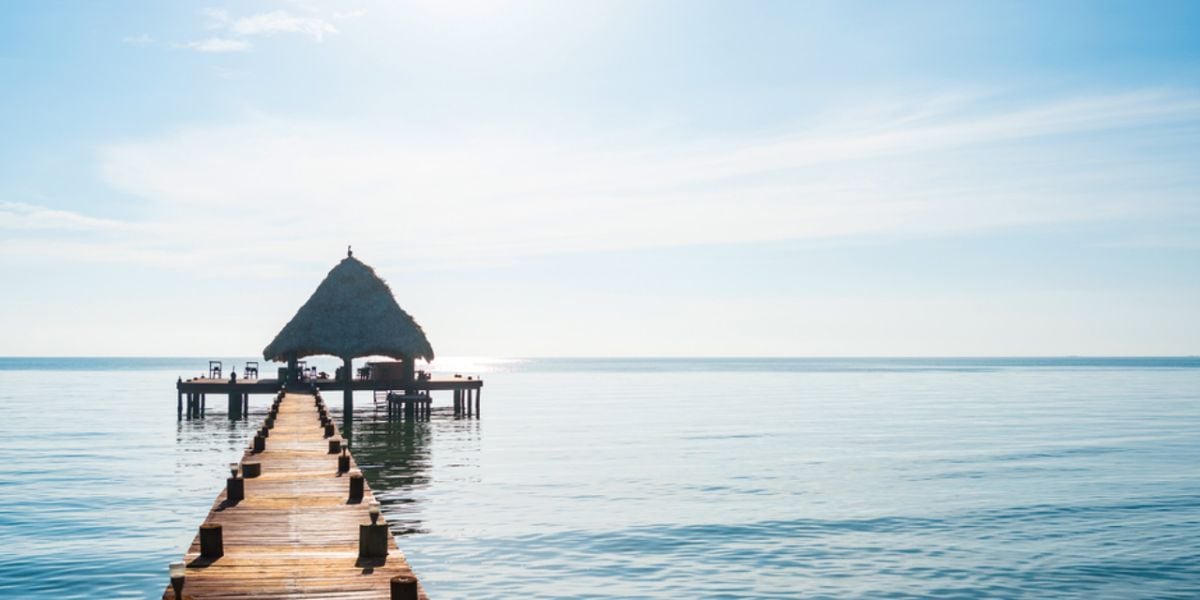
Belize offers expats a warm, welcoming atmosphere where community life is vibrant, especially during cultural festivals and September's national celebrations. Rich in Mayan heritage and diverse ethnic traditions, from Creole to Garifuna, the country blends ancient history with modern cultural expression through food, music, and rituals. Nature lovers are drawn to Belize's lush jungles, protected wildlife sanctuaries, and expansive marine reserves like the Blue Hole and Hol Chan, ideal for hiking, diving, and wildlife encounters. Whether exploring ancient ruins or relaxing on a tropical beach with local rum, Belize provides both adventure and tranquility.
Integrating as an expat in Belize
The very first thing to know is that Belizeans are renowned for their warm, welcoming spirit. Engaging with locals is often effortless, and many are eager to share the country's rich cultural tapestry and storied past. Whether in casual conversation or guided encounters, their pride in heritage is both palpable and infectious.
Throughout the year, towns and villages, regardless of size, commemorate their origins with vibrant annual festivals. These community gatherings offer a lively glimpse into Belizean traditions, blending music, food, dance, and storytelling into unforgettable celebrations.
Community life is anchored by family, riverside leisure, and spirited gatherings. September, the nation's month of celebration, brings these traditions to the forefront with parades, music, and vivid expressions of national identity.
Discovering Belize's rich history and culture
Belize, once a vital hub of the Mayan Empire, is steeped in ancient history that still pulses beneath its forested landscapes. Ruins such as Altun Ha, Lamanai, and Xunantunich offer a powerful glimpse into this pre-Columbian world. Cahal Pech, perched above San Ignacio, stands out as one of the most accessible sites, nestled close to modern settlements. Xunantunich, once a prominent ceremonial centre, boasts over twenty temples and a royal palace, echoing the grandeur of a lost civilisation. In the south, more remote sites like Lubaantun and Nim Li Punit retain a sense of mystery and discovery, where excavations continue intermittently, revealing artefacts such as the enigmatic and widely disputed Crystal Skull.
To delve deeper into Maya cosmology, a visit to the sacred caves is essential. Actun Tunichil Muknal (ATM) is perhaps the most iconic, believed by the Maya to be a portal to the underworld of the Gods. These caves were often preferred over temples for the most solemn rituals. Inside, firelight dances across stalactites and stalagmites, illuminating offerings such as carved stones, pottery, and skeletal remains, silent witnesses to spiritual practices long past.
Modern Belize is equally rich in cultural diversity. Contemporary Maya communities continue ancestral traditions, crafting chocolate by hand, preparing pibil in earth ovens, and creating pottery using ancient techniques. Each district reflects its settlers' heritage.
In the north, Yucatec Maya and Mestizo groups (of Maya and European descent) shaped the agricultural economy and forged ties with Mexico. Cities like Corozal and Orange Walk display a unique blend of English and Spanish, aptly expressed in a localised Spanglish.
In the West, the population mirrors the North in ethnic makeup but with a distinct orientation. The Maya here are primarily Mopan, while the Mestizo community maintains closer ties to Guatemala. Outdoor pursuits are central to recreation, with major national events such as La Ruta Maya river challenge and the Holy Saturday Cross Country Cycling Classic, alongside theatrical cultural expressions like the Passion of Christ reenactments.
Meanwhile, along the coast and in the south, the Garifuna people carry forward a unique heritage rooted in African and indigenous Caribbean origins. Their cultural expressions, through food, music, and rituals, are vibrant and deeply spiritual. Cassava, coconut, plantains, and bananas form the foundation of Garifuna cuisine. Leisure often takes the form of drumming, dancing, and elaborate communal celebrations, especially during times of remembrance and festivity.
What is Belizean cuisine like?
The cuisine in Belize leans heavily on tacos, burritos, ceviche, corn tortillas, and a ubiquitous presence of Chinese takeout.
The central districts were primarily settled by the Creole population, descendants of African and British ancestry. Their culinary imprint is flour-based and comforting: journey cake, Creole bread, fry jacks, and rich pairings like rice and beans with stewed chicken and fried plantains.
Nature in Belize
If you are more outdoorsy, Belize is a natural haven. The landscape is a vibrant mosaic of mountains, dense forests, untamed jungles, winding rivers, and mysterious cave systems, stretching across much of the countryside. An impressive 26% of Belize's land is under official protection, and nearly 80% remains covered in forest, preserving an extraordinary range of biodiversity. Among the country's hidden gems are cascading waterfalls and crystalline pools such as Hidden Valley Falls, St. Herman's Blue Hole, and the enchanting Five Sisters Falls.
Trekking through these wild spaces unveils an astonishing array of tropical flora, from delicate orchids to prehistoric ferns. The fauna is equally captivating: howler monkeys echo through the canopy, toucans and parrots flash vibrant colours overhead, and crocodiles glide silently through rivers. You may also spot Belize's national animal, the shy and gentle tapir. On rare occasions, lucky adventurers catch glimpses of elusive big cats like the ocelot or the majestic jaguar.
To enhance your wildlife encounters, visit renowned conservation areas such as Monkey River, the Community Baboon Sanctuary, or the Cockscomb Basin Wildlife Sanctuary, home to the world's first jaguar preserve. Birdwatchers, too, will find themselves in paradise, as Belize hosts a dazzling variety of avian species year-round.
However, some parts of the forest remain virtually impenetrable due to their density. For safety and access, it's essential to travel with a knowledgeable local guide who understands the terrain and can navigate both the wild and the wonder.
Marine reserves in Belize
Belize is equally rich beneath the waves, with a dazzling array of marine reserves and coral ecosystems. The Caribbean Coral Reef, second in size only to Australia's Great Barrier Reef, hugs the coastline and offers a dreamscape for scuba diving enthusiasts. Among its crown jewels is the legendary Blue Hole, immortalized by Jacques Cousteau as one of the world's premier dive sites. Along the seafloor, divers encounter a kaleidoscope of corals, vibrant reef fish, and intricate underwater caverns waiting to be explored.
Ambergris Caye, the largest and most developed island in the region, is a magnet for tourists seeking both natural beauty and modern comforts. Its shores, along with those of Caye Caulker, Hopkins, Placencia, and the scatter of cayes along the southern coast, boast some of Belize's most idyllic beaches. Nestled between Ambergris Caye and Caye Caulker is the Hol Chan Marine Reserve, a protected marine habitat teeming with coral gardens, seaweed meadows, and a thriving undersea cave system. Here, you can also swim alongside nurse sharks and rays in the famous Shark Ray Alley.
Nature lovers should not miss Half Moon Caye, a designated bird sanctuary that shelters hundreds of species, from frigate birds to red-footed boobies. Sea turtles frequently return to its shores to nest. To witness the slow grace of manatees, head to Gales Point or book an eco-tour from Placencia. And from March through July, southern Belize becomes a passageway for whale sharks, the ocean's gentle giants, offering a rare and awe-inspiring opportunity to swim beside them.
When adventure wanes, Belize offers its own brand of serenity. A hammock strung under palms or a lounge chair facing the surf is often enough. Let the rhythm of the waves, the chatter of birds, and distant strains of music wash over you, with a cold Belikin beer or a glass of the country's renowned rum in hand.
Useful links:
We do our best to provide accurate and up to date information. However, if you have noticed any inaccuracies in this article, please let us know in the comments section below.








